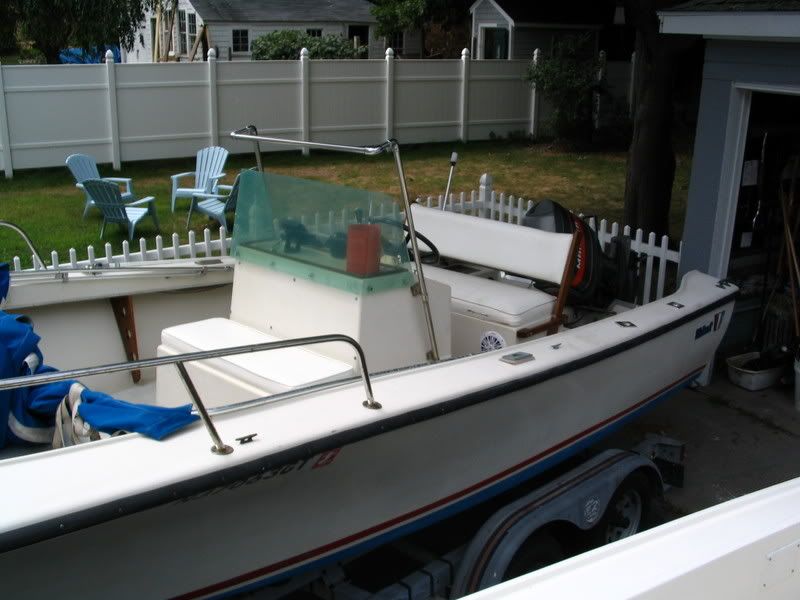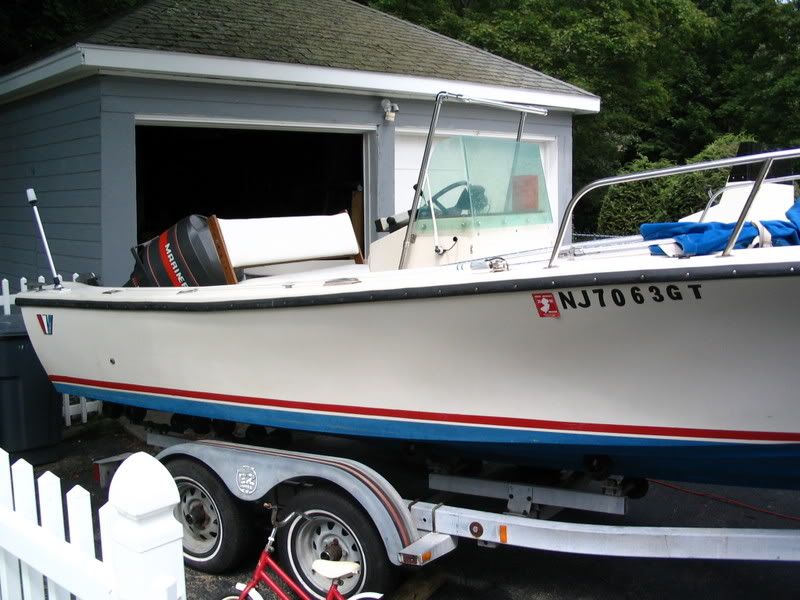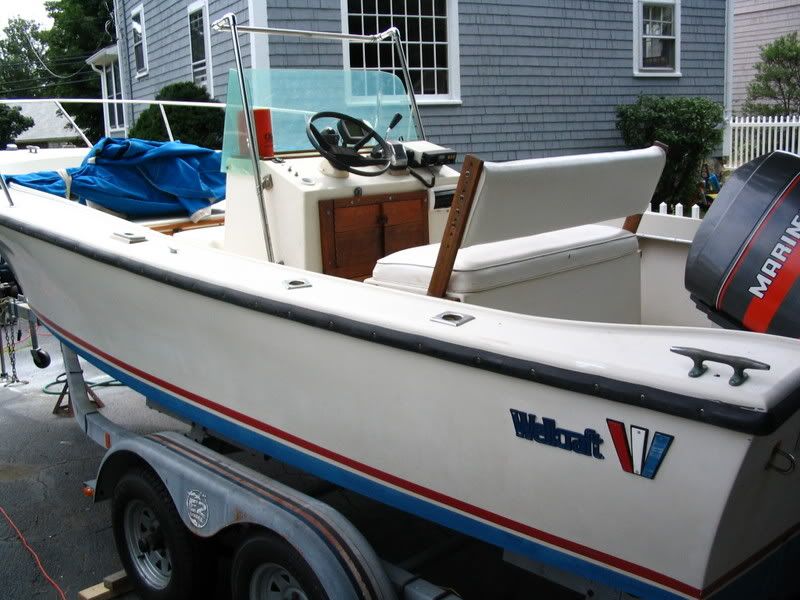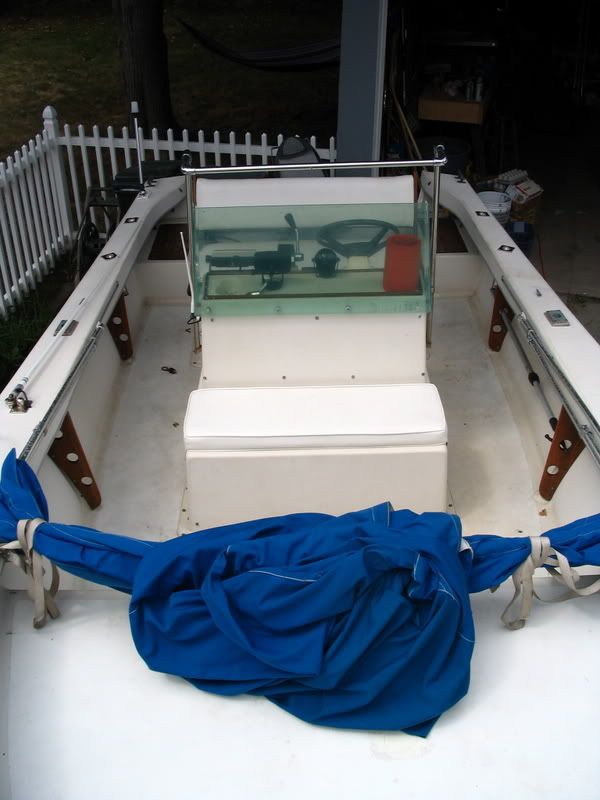
 |
|
#11
|
|||
|
|||
|
Not sure. I think you get 1255 cubic inches per 5 gallon pail. Ill try to do the math this weekend. Probably at least 10 gallons.
|
|
#12
|
|||
|
|||
|
Hey 71maco, Ive gotta 77 V cutty I/O and replaced the transom on it last year. I removed the engine, inner transom plate and gimble completely.I removed both saddle tanks and any wiring in the way. I then cut the inside skin off the transom, and cut out about 10-12 in.off the floor under the transom cap that wouldnt be seen when repaired. I ground ALL the wood and hand laid glass out clean to the inside of the outer skin. I washed it all down with asetone, and laid layers and layers of resin and glass back in, making it totaly flat across the inside. The transom was made of three pieces of 3\4in plywood, so I bought 2 sheets of marine grade ply (86.00 a piece) , cut 3 templates. I cut the plywood and glassed it back in using all the existing screw holes in the transom to put ss screws through a 1in block of scrap wood to pull the wood up tight to the outer skin. I used 8 clamps in the outdrive hole. After it set i cut and applied another piece of ply to the center to give me 2inches total thickness for the gimble. I glassed it all in really good and gelcoated it over. Try ad avoid all air pockets and bubbles . Its messy but not that hard . Its solid as a rock. If it lasts 30 years again I wont have to worry about it! *Oh forgot to tell ya to make sure if ya have a I/O to glass the inside of the outdrive hole , Thats why mine rotted in the first place! It took about 10 gallons of resin and a pile of mat!
__________________
 77 V20 cuddy with 170 I/O Mercruiser 72 16ft. Carolina w/a 25hp Evinrude |
|
#13
|
|||
|
|||
|
Buy leaving the outter skin untouched, the shape or curve to teh transom is not affected. Still waiting on those Pics. ;D
__________________

|
|
#14
|
|||
|
|||
|
Guys,
I have to admit that I've been looking into transom repair techniques other that the traditional glass/wood layup process. I've been communicating to a few folks on the Mako board (sorry :-[) . I've looked at Seacast, Arjay and Nicacore. I've spoken to people at all three manufacturers as well as at Wellcraft and Venture marine (both use the Arjay 6011 pourable ceramic in their transoms. Here's a post I made on the Mako board: I spoke to the guys at Arjay yesterday. Very helpful. They are sending me a bonded piece of their material to check out. Being a civil engineer, I've researched this pourable stuff significantly. I've loooked at three products: Seacast, Arjay 6011 and Nicacore's Nidabond pourable transom product. Allare poly resins with possible add mixtures. Seacast uses chopped fiberglass where the other two use ceramic spheres. I've got to think the fiverglass strands will provide superior tensile strength that the spheres, and that is backed up by the Seacast strength tests (for what they are worth). Wellcraft ahd Venture marine both use the Arjay in their transoms and have been for some time. I found Arjay for $95/5 gallon (quoted) at Fiberglass Services in Sarasota. Nidabond is about $115 and Seacast is running over $200 for the same size bucket (ouch). I completely agree with Raybo that the pourable material has its applications but not across the board. If your stringers are bad you need to go full replacement with the traditional method (I would use coosa, but that's just me). With this method, you've got to cut the hull or inner liner at some point - just no way around it. In my case, I have a very clean Wellcraft that I don't want to cut the cap on (I will never go in through the hull; again, that's just me and my skill level). I also agree with Raybo that if you use a pourable, the void space MUST be clean, freshly sanded and with a coat of new glass or resin applied. Harbor freight has affordable drill bits (about 2 ft long) for getting the wood out and they have a cheap drum/disk sander pack that fits on a drill. The sizes range up to about 3 inches. The smaller ones are perfect for sanding in between the hull and liner. While I see the dangers of going the chainsaw route, I have a small electric that I would use IF the wood is very soft and easily removed. I'll definately document the process when I begin. As I say in that post, My dually is pristine up top (not to the Lumber's level yet!) and I really don't want to cut the top cap. I could remove the entire cap but I don't have the facilities for that. I'm of the opinioin that IF you can get ALL the wood out - no matter how long that takes- and you can get a fresh coat of glass/resin in the transom to promote a good bond, the pourable's are a good alternative. I'm leaning to the Arjay 6011 at this point. My transom has a little flex, but its not terrible. This may be a winter project for me. Hope this helps, Maury
__________________
FLOUNDER |
|
#15
|
|||
|
|||
|
I think Im gonna try the pourable. I pulled up part of the top cap and the transonm is rotten, I can pull it out with just my hands. I grabbed out about 3" down, like cereal!
Here are some picks of the boat:     |
|
#16
|
|||
|
|||
|
Quote:
|
|
#17
|
|||
|
|||
|
Yeah, mine is a 73 and after looking at it it is not set up like yours. I dont think it will work the same.
|
|
#18
|
|||
|
|||
|
Make sure you post pics. of te transom fix and teh total cost. Nice V. ;)
__________________

|
|
#19
|
||||
|
||||
|
HAMMER, I think you may have posted it somewhere else,
but if you had not gotten any freebees, how much would you have into the transom you are doing?? The reason I am asking, it would be great to see a side by side comparison of costs for different transom repair materials.
__________________
  Bottom's up!!! Bottom's up!!!
|
|
#20
|
|||
|
|||
|
Not to change subjects but for that bimini all bunched up on the floor try one of these and you can get them in blue.
http://overtons.com/modperl/product/catalog.cgi |
 |
| Thread Tools | |
| Display Modes | |
|
|